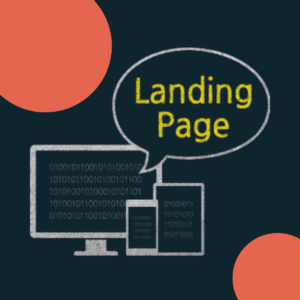With PPC (Pay-Per-Click) advertising, every click carries a cost. It is imperative to convert those hard-earned visitors into customers to maximise the return on investment (ROI) of your ad spend. In this blog post, we will explore essential strategies for conversion rate optimisation (CRO) in the context of PPC advertising. We will cover overall optimisation techniques, desktop-specific tactics, and mobile-specific approaches. By implementing these recommendations, you can enhance user experience, increase trust, and amplify the impact of your PPC campaigns.
Overall Optimisation:
💡Ease of Navigation: Simplify your website’s navigation structure and ensure that visitors can easily find what they’re looking for without having to click through to different pages and get lost in the website.
💡Streamlined Conversion Funnel: Optimise the conversion process by reducing friction and eliminating unnecessary steps. Make it easy for visitors to convert by simplifying forms, minimising data entry requirements, and providing clear instructions.
💡Trust Signals from Third-Party Reviewers: Incorporate testimonials, ratings, and reviews from reputable third-party sources. Positive feedback and social proof enhance trust in your brand, ultimately influencing purchase decisions.
💡Unique Selling Propositions (USPs): Clearly communicate your company’s unique value propositions to visitors. Highlight what sets your business apart from the competition and why customers should choose your products or services.
💡Address Pain Points: Identify common pain points or challenges faced by your target audience and emphasise how your offerings provide effective solutions. Focus on addressing customer needs to increase the likelihood of conversion.
💡Landing Page Relevance: Ensure your landing pages directly related to the keywords and messaging used in your PPC ads. Consistency between your ad and landing page creates a seamless user experience, increasing the likelihood of conversion. Users should find what they expect to see, fostering trust and minimising bounce rates.
💡Speed and Performance: Mobile users expect fast-loading pages. Optimise your mobile landing pages to load quickly, keeping visitors engaged and reducing the chances of abandonment.
Desktop Optimisation:
💻Design-Driven Content: Desktop users often desire more comprehensive information before making a purchasing decision. Create visually appealing landing pages that incorporate detailed content, including product features, benefits, and customer testimonials.
💻Clear CTAs: Use visually appealing, attention-grabbing Call-to-Action (CTA) buttons that stand out from the surrounding content. Ensure that they are strategically placed to drive conversions and guide users towards desired actions.
💻A/B Testing: Continuously test different elements, such as headlines, images, colours, and CTAs, on your desktop landing pages. This iterative approach helps identify the most effective combinations that yield the highest conversion rates.
Mobile Optimisation:
📱Responsive Design: Ensure your landing pages are fully optimised for mobile devices, providing a seamless browsing experience. Responsive design guarantees that your PPC ads drive mobile users to mobile-friendly landing pages, reducing friction and improving conversion rates.
📱Thumb-Friendly CTAs: Optimise mobile CTAs by aligning them with users’ natural thumb placement. Placing important buttons within easy reach improves user experience and encourages conversions.
📱Visible Contact Information: Make sure that essential information like phone numbers and contact details are clearly visible on mobile devices. This enables users to quickly reach out and establishes trust and accessibility.
📱Minimise Scrolling and Text: Mobile users have limited screen space and attention spans. Reduce the amount of scrolling required and keep the text concise, ensuring key information and CTAs are visible without excessive scrolling.
📱Prominent CTAs: Place CTAs near the top of the mobile screen to capture users’ attention without the need for excessive scrolling. Make them highly visible and intuitive for quick and effortless conversions.
Conclusion:
PPC advertising requires a strategic approach to ensure that your investment translates into tangible business results. Conversion rate optimisation is an ongoing process that requires continuous monitoring, testing, and refinement. By implementing these conversion rate optimisation strategies, you can increase the effectiveness of your PPC campaigns, boost user engagement, and ultimately improve ROI. Remember to tailor your optimisations to both desktop and mobile users, leveraging the unique advantages and challenges each platform presents. Stay proactive, continuously monitor performance, and refine your campaigns based on user behaviour to unlock the full potential of your PPC advertising efforts.

